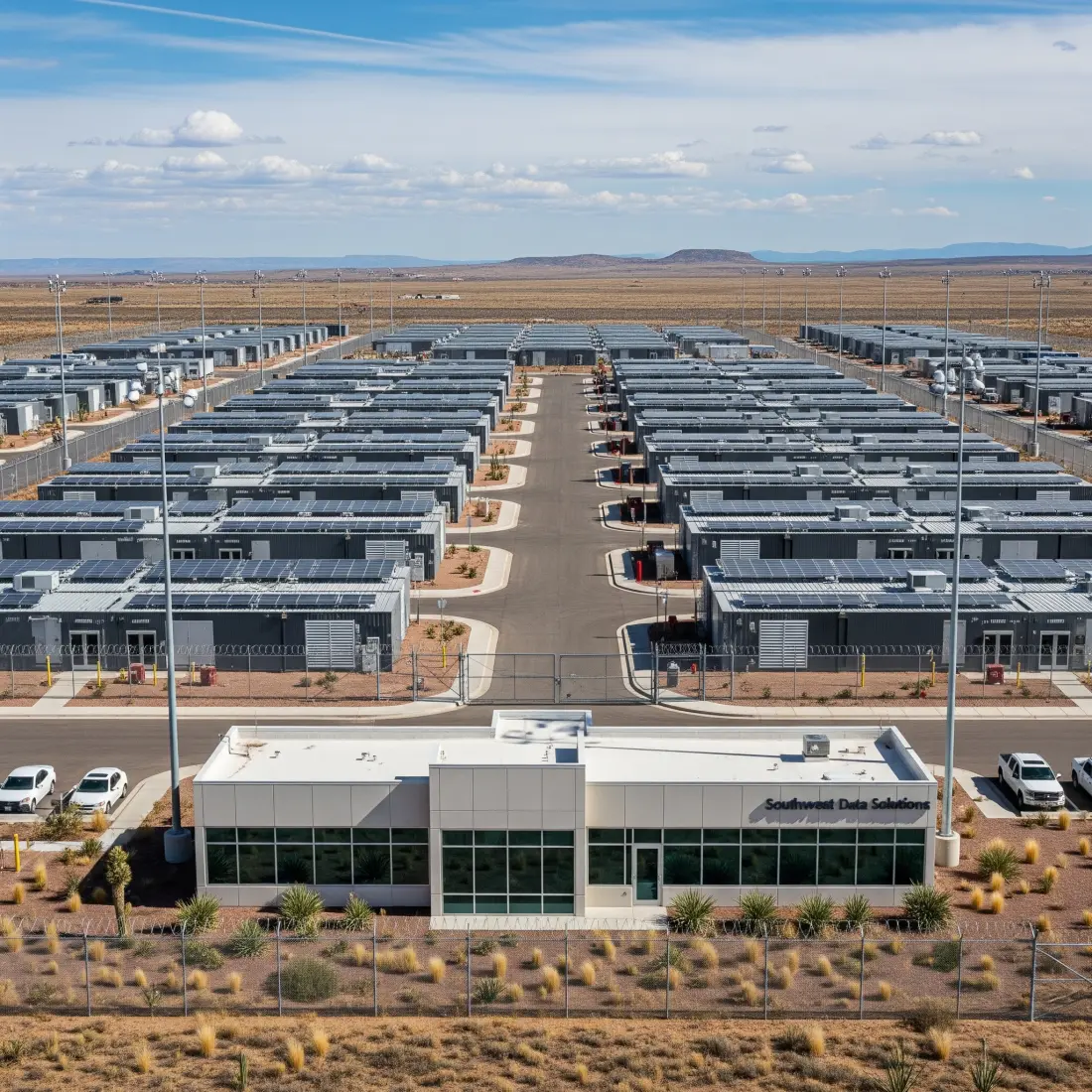PVcase leads the conversation: expert insights on data center site strategy


The demands on our digital infrastructure are changing rapidly. As artificial intelligence moves from concept to everyday application, the need for faster, more adaptable, and cost-effective data center solutions becomes urgent.
This significant shift is bringing modular data centers to the forefront, proving they are a critical answer to today's AI workload challenges.
PVcase’s Jake Anderson recently joined an industry video podcast, "Data Center News Show," to contribute to the discussion on data center strategy. Jake, Head of Business for PVcase Prospect, shared key insights into the challenges and solutions defining today's data center market.
Finding the ideal data center site
Jake shed light on the paramount challenge facing data center developers today: finding the right land with sufficient available power. Traditional site selection used to be a manual, often tedious task, but PVcase is revolutionizing this critical first step.
Much like with the solar industry, the webinar showcased how data centers have evolved from large-scale projects to more distributed and quicker small-scale deployments in the form of modular solutions. But even with these changing trends, the fundamental need for robust site selection remains constant.
Automating the Search for Power and Land
PVcase's software solution directly addresses this challenge by automating the entire land and power site selection process. The modern grid is more complex than ever, incorporating batteries, large-scale storage, intermittent renewables, and a host of other factors that make reliability a moving target.
This complexity is where PVcase Prospect excels. The software runs power flow models that are not just similar, but "the exact same type of models run in the exact same way as grid operators" to help developers understand power availability and upgrade costs. This means before developers even approach a utility, they can:
✅ Accurately assess power availability: Understand if a substation has the required power transmission capacity.
✅ Estimate grid upgrade costs: Crucially, predict if a site will incur significant upgrade fees that might render it unviable.
✅ Integrate power data into site selection: The software links detailed grid modeling data with geolocation data, allowing users to understand where real-world locations are that meet their specific power and cost criteria. This means no more guessing or waiting months for utility studies and the ability to target sites efficiently at-scale from the start.
"We take all of that modeling data and tie it into our geolocation data, so that you can go into an area and say, 'I only want to look at substations where I've got at least 200 megawatts of power and my upgrade bill is going to be less than 5 million bucks.'"
Jake Anderson
Decoding "phantom loads"
The discussion also touched on the often-misunderstood concept of "phantom loads." Regardless of industry trends, all data centers depend on a power supply that accounts for capacity beyond immediate consumption. This is often referred to as phantom loads, representing the power capacity that data centers have reserved but are not actively consuming.
Excess power is often needed because of redundancy requirements (like N+1 or 2N designs) that ensure continuous uptime. While utilities would prefer to sell this unused power, data center operators are understandably reluctant to release it. Instead, it acts as a critical reserve for immediate use if a power feed fails. Consequently, this widespread practice places an even greater strain on grid resources, making meticulous grid capacity analysis a more critical factor than ever in data center development.
Jake highlighted that PVcase's models factor in all types of usage, including these reserves, along with time-of-day and seasonal curves, and intermittent assets like EV charging. This approach ensures that grid operators and developers have the most accurate understanding of load dynamics.
Ultimately, PVcase's solution empowers data center developers to make faster, more informed decisions by democratizing access to complex grid data. It transforms a historically manual and uncertain process into a strategic, data-driven advantage.
Check out the full video to hear more from Jake Anderson and other industry experts.


Stop guessing; start optimizing site selection
Book a demo and learn how to advance and scale your site selection process for data centers, solar projects, and more with PVcase Prospect.
